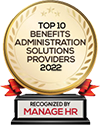This renewal season, we received a proposal for one of our clients which contained over $100,000 in pharmacy rebates going back to them. Pharmacy rebates are baked into every contract, but frequently these funds are given as profit straight to the insurance carrier. But what if all companies, not just the large market, could have access to some of these rebates, which can significantly help contain costs? Here are the steps to take to get insight into your population and see how far your company can and should push toward the containment of cost.
Health Reimbursement Accounts (HRAs)
HRAs are the lowest-risk self-insurance channel to get preliminary insight into your employee’s claims. By covering certain expenses, you can view them and analyze their data. This preliminary assessment can indicate how healthy your population is and whether self-funding is likely to be profitable for you and your business.
Level-Funding
If HRA data is favorable, the next step is level funding. This type of funding allows the employer to continue to pay a stable monthly premium to cover claims, administration, and stop loss, but they are eligible to receive a portion of unused funds in return after the plan year. With level funding, you get the benefits of paying the same premium each month while gaining some access to profits. Most importantly, this funding vehicle gives you access to gross claims and utilization data, which allows you to assess further if additional cost control is right for you.
Bundled Self-Funding with an Insurance Carrier
If a level-funded program is running well, it is worth exploring fully self-funded contracts. This next step in the chain allows you to create continuity for employees while saving costs for you. With minimal disruption by possibly being able to keep the current plan design and network, employees notice no change while you reap the benefits. You gain even more access to claim and utilization data and more access to profits.
Bundled or Unbundled Self-Funding with Third Party Administrators (TPAs)
If your claims run well, the final step in controlling your cost is to go to TPAs. They will give you full access to claim and utilization data with the full ability to negotiate access to the profits hidden by most carriers. If you have a healthy population, this is a phenomenal step to control your costs, mediate the inflation in health insurance, and create a well-rounded program designed to meet the needs of your employees.
Want to start the process of controlling your costs, or moving further towards cost control? Contact our Benefit Advisors today!

